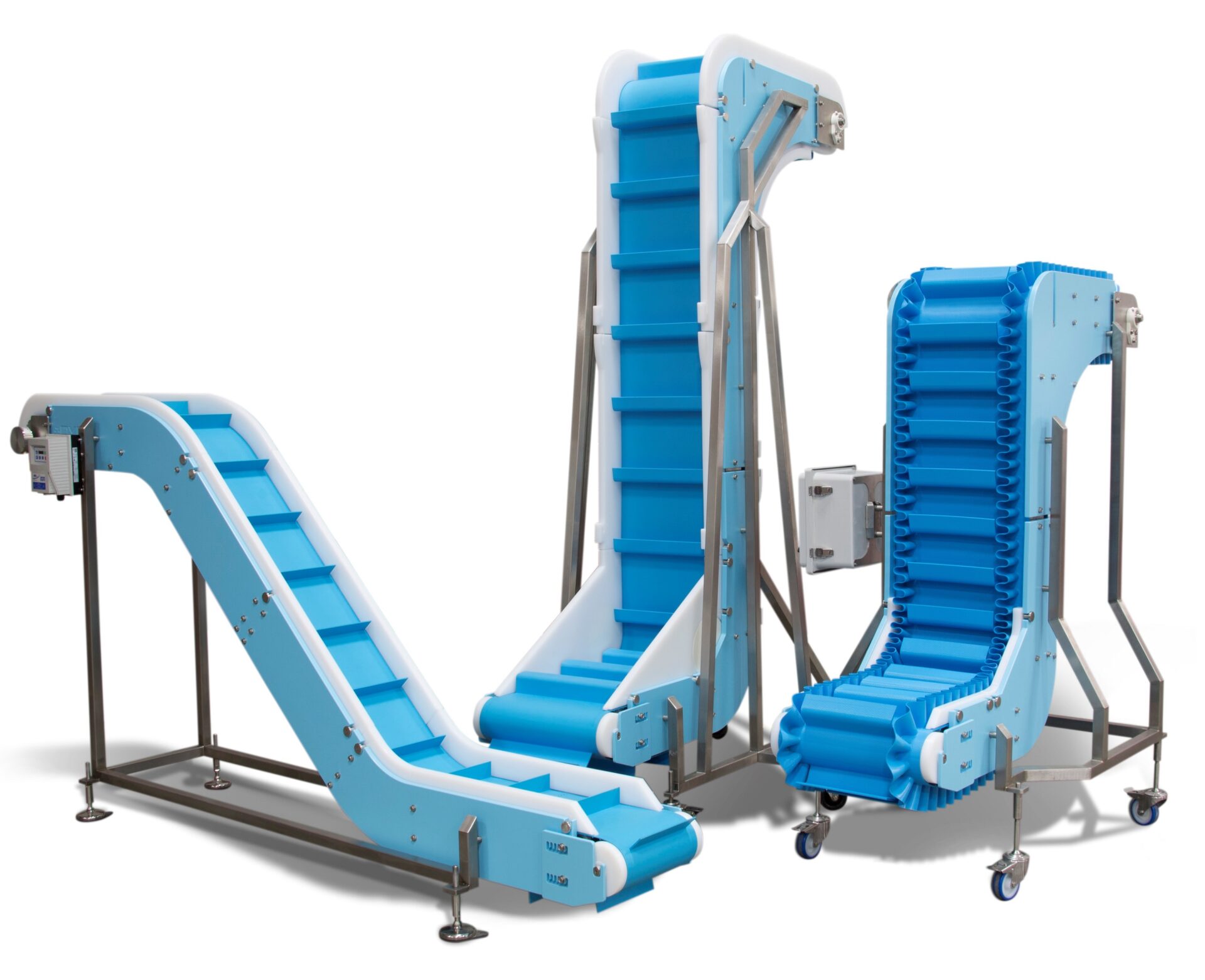 Sanitary conveyor systems are a critical element in the automation and operational efficiency at food packaging and processing facilities. Conveyor technology is advancing and there are several questions you should ask before making your next conveyor purchase. You want to make sure that your sanitary conveyor purchase will give you the best overall return on your company’s investment.
Sanitary conveyor systems are a critical element in the automation and operational efficiency at food packaging and processing facilities. Conveyor technology is advancing and there are several questions you should ask before making your next conveyor purchase. You want to make sure that your sanitary conveyor purchase will give you the best overall return on your company’s investment.
How easy is it to clean and sanitize?
The ease of which you are able to clean a conveyor system is imperative. Look for food grade conveyor systems that offer a simple design that is easy to take apart for quick cleaning and sanitizing.
A good design will allow you to take the conveyor apart without the use of tools. Removable components should be small enough to easily handle, but large enough so they don’t get lost. Make sure all equipment parts are accessible for cleaning and are self-draining with no product or liquid collection points.
Consider the color of the conveyor. Conveyor color, such as blue, can aid in the visual identification of soil and food particles. With the right conveyor, you can greatly reduce your risk of product contamination and recall.
What is the expected lifetime of the conveyor?
You want to find a conveyor that will give you many years of service – far beyond your initial investment.
The right conveyor will be made of components that are chemical and corrosion resistant in order to handle the rigors of frequent cleaning and sanitizing. Conveyor components made of plastic will not splinter, rot or retain harmful bacteria, odors or cleaning agents.
Conveyor sidewalls made of plastic material, versus stainless steel, can be easily modified and replaced when design changes are needed or damage has been done to the conveyor.
What costs should I consider beyond the original purchase?
Don’t forget to consider the cost of operating, cleaning and maintaining the system. The labor and resources needed for cleaning the conveyor can quickly become your largest expense. Look for a conveyor with minimal parts and the ability to clean it quickly and efficiently.
Conveyor systems designed to be used with self-tracking belts will reduce maintenance costs and the need for frequent and costly conveyor belt replacements.
Remember, you want your conveyor to spend most of its time making you money, not costing you money.
How much time should I allocate for ongoing maintenance?
Maintenance and uptime can affect productivity. Determine what type of maintenance your new system will need.
Consider motors with a hermetically sealed design that ensures internal parts are not exposed to external environmental conditions and tampering. Look for conveyors with feed rollers that are bearing-free and require no maintenance.
Request a conveyor with belting that is tension-less and self-tracking. It is sure to provide you with good performance without the need for continuous adjustments.
How will my product interact with the belting?
Look for a vendor that offers a wide range of belt types and styles for their conveyor systems. Consider whether your food product is wet, dry or sticky and inquire about the ideal belt type and style for optimal conveyance.
A conveyor system with a variety of options in solid-surface, link style and metal mesh belting will be able to provide the best option for conveying all your food products.
What safety features are included?
Look for a conveyor system where all of the moving parts – such as chains, belts and sprockets – are not accessible to fingers, hands and loose clothing.
The safest conveyors are designed without sharp edges and ensure that all moving parts are self-contained or guarding is in place.
If efficiency and profitability are important to you and your company, then make sure that the conveyor you choose can check off all the above boxes.
[btn url=”https://pages.services/welcometo.dynaclean.dynamicconveyor.com/questions-to-ask-sanitary-1/”] Print the Checklist [/btn]- Boosting Efficiency with a Robotic Pick and Place Conveyor Solution in Plastics Manufacturing - April 18, 2025
- SNAXPO25 Recap: Snack Industry Trends and Insights - April 6, 2025
- Modern Conveyance and Automation in Food Manufacturing - March 21, 2025


